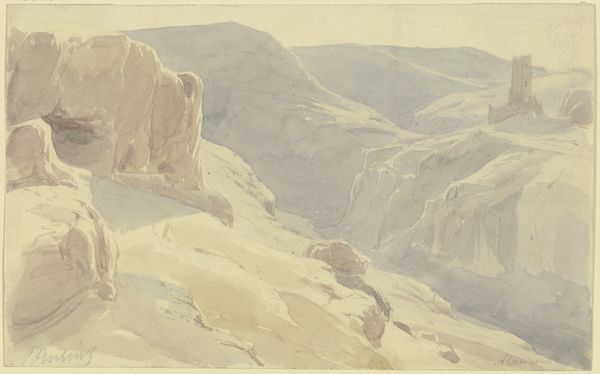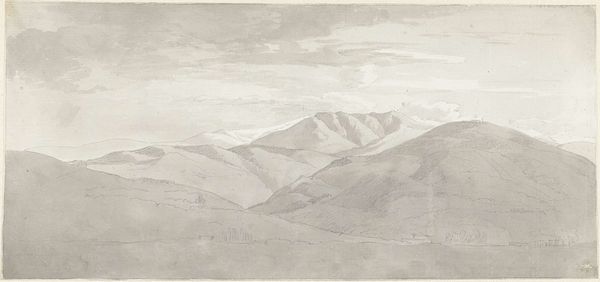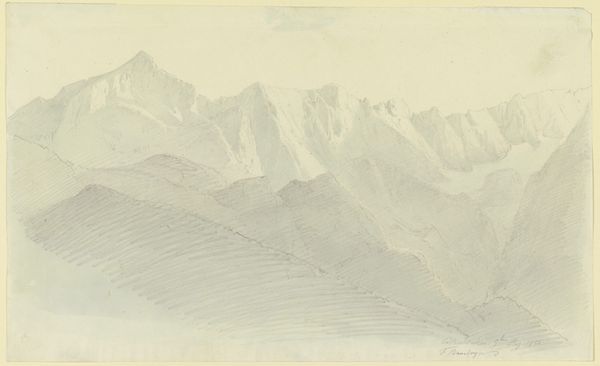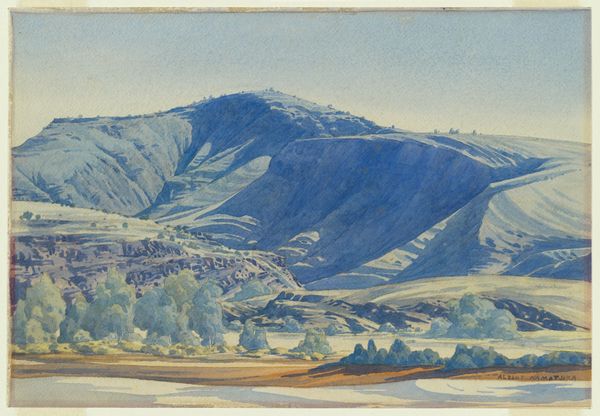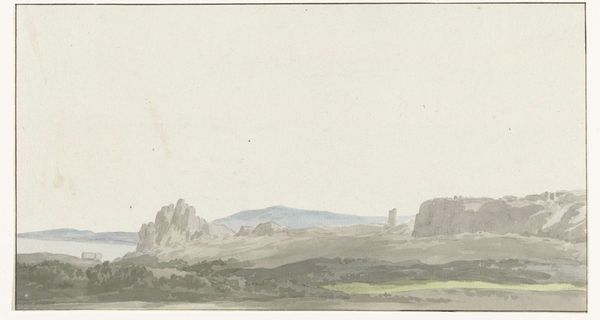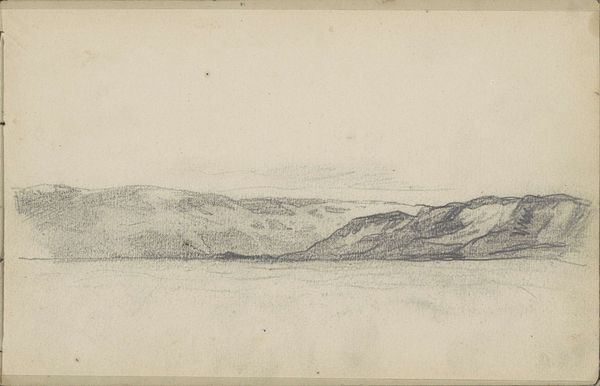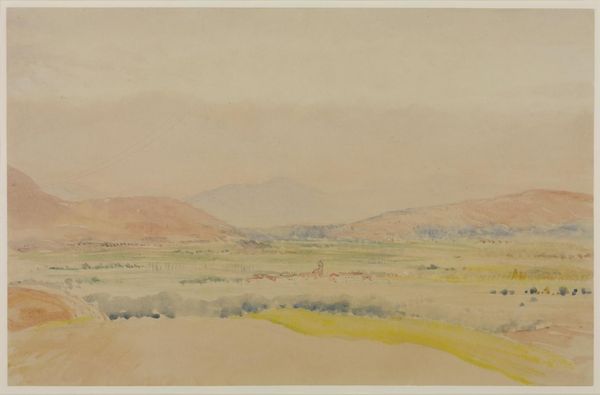
painting, watercolor
#
water colours
#
painting
#
landscape
#
figuration
#
watercolor
Copyright: Albert Namatjira,Fair Use
Curator: Looking at this work by Albert Namatjira from 1938 titled, "Mereenie Bluff Range, West MacDonnell Ranges, Central Australia," I’m struck by the sense of vastness it conveys, even in its seemingly small scale. The colours are so subdued, almost monochromatic. Editor: There is an immediate tension at play. On one hand we see the romantic vision of the outback through Western techniques of landscape painting. On the other, this echoes and complicates a colonial relationship with Aboriginal land rights. I wonder about Namatjira’s specific perspective and positionality in 1938 as he grappled with both. Curator: That’s an insightful point. It's fascinating to consider the context of 1938 in Australia and how the western watercolor technique might've both empowered Namatjira and implicated him within a complex sociopolitical landscape. Think about the reception of landscape paintings like this. They provided an image of Australia that both fueled the romanticism of colonization while suppressing Indigenous understandings of land. Editor: Precisely! I'm drawn to that tension between representation and lived reality. Namatjira's work, through this lens, is more than just landscape painting; it's a powerful, subtle negotiation with colonial constructs. It urges us to understand how social narratives impact the act of viewing. Curator: Yes, there’s a layer of socio-political history imbued in those brushstrokes that shouldn't be ignored. And what about its effect in art history circles at the time? Were critics attuned to those nuances or was it simplistically embraced as "Australian art”? How did that framing impact indigenous artists following his work? Editor: Excellent questions that illuminate how the very *institutions* of art contribute to larger, asymmetrical power dynamics. Perhaps understanding those systems that uplift or negate artistic vision can move the focus from the artist's internal experience to how culture uses these creations. Curator: Examining the image through historical and contemporary lenses indeed enriches our interpretation and reminds us that it embodies far more than a visual record. It is a story about place, power and visibility, and highlights art's potent role in documenting the socio-political conditions surrounding its creation. Editor: I couldn't agree more. It reminds us that art isn't produced in a vacuum but is born from intricate, often unseen power relations. Analyzing through these layers reveals a piece's deeper complexities.
Comments
No comments
Be the first to comment and join the conversation on the ultimate creative platform.

